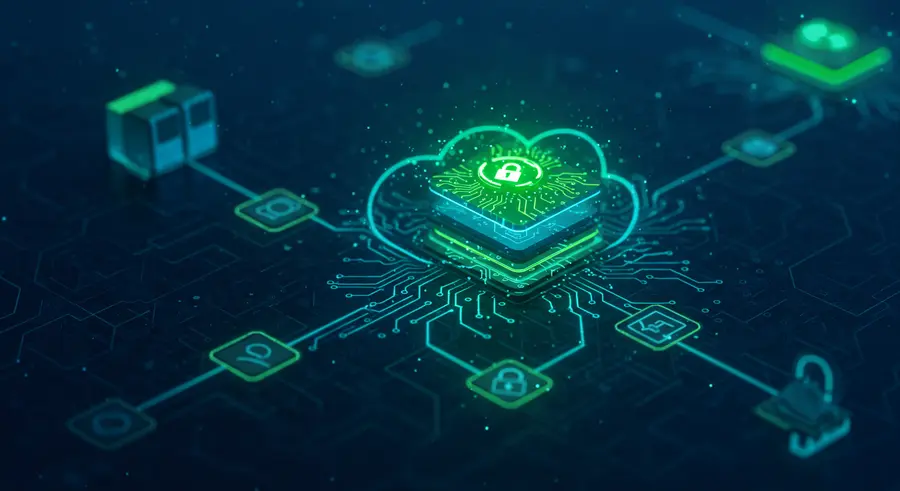Cloud Security & CTI: Defending the Digital Frontier

The migration to cloud environments has brought unparalleled scalability and flexibility, but it has also introduced a new set of complex security challenges. As organizations increasingly rely on cloud infrastructure, applications, and services, the need for robust cloud security measures, augmented by effective Cyber Threat Intelligence (CTI), has become paramount. This article explores how CTI can be leveraged to fortify your cloud defenses, offering proactive insights and strategies to mitigate risks.
Understanding Cloud-Specific Threats
Cloud environments present unique attack vectors and vulnerabilities that differ from traditional on-premise infrastructures. Common threats include:
- Misconfigurations: Often the leading cause of cloud breaches, misconfigured S3 buckets, security groups, or IAM policies can expose sensitive data.
- Insecure APIs: Poorly secured or designed APIs can become entry points for attackers to access and manipulate cloud resources.
- Account Hijacking: Compromised credentials can grant attackers full control over cloud accounts, leading to data exfiltration or service disruption.
- Insider Threats: Malicious or negligent insiders can exploit their access to cloud resources.
- DDoS Attacks: Distributed Denial of Service attacks can target cloud applications and services, leading to downtime and financial losses.
- Lack of Visibility: It can be challenging to gain complete visibility into cloud environments, making it difficult to detect and respond to threats effectively.
The Role of CTI in Cloud Security
CTI provides the necessary context and foresight to defend against these evolving cloud threats. By analyzing threat actor tactics, techniques, and procedures (TTPs) targeting cloud environments, CTI teams can:
- Predict Attacks: Identify emerging threats and attack patterns before they impact your cloud infrastructure.
- Prioritize Vulnerabilities: Understand which vulnerabilities are actively being exploited in the wild, allowing for prioritized patching and remediation.
- Enhance Detection: Develop more effective detection rules and alerts based on known threat indicators (IOCs) relevant to cloud platforms.
- Improve Incident Response: Accelerate incident response by providing context on threat actors, their motivations, and likely next steps.
- Inform Policy & Architecture: Guide the development of secure cloud architectures and security policies based on current threat landscapes.
Integrating CTI into Your Cloud Security Strategy
Effective integration of CTI into your cloud security strategy involves several key steps:
1. Source Relevant Cloud Threat Intelligence
Beyond generic threat feeds, focus on intelligence specifically tailored to cloud providers (AWS, Azure, GCP) and cloud-native technologies (containers, serverless). Sources can include cloud provider security advisories, industry reports, dark web monitoring, and intelligence sharing communities.
2. Map CTI to Cloud Controls
Align threat intelligence with your existing cloud security controls and frameworks (e.g., NIST, CIS Benchmarks for Cloud). This helps identify gaps and ensures that intelligence is actionable in the context of your cloud environment.
3. Automate Intelligence Consumption
Utilize Security Information and Event Management (SIEM) and Security Orchestration, Automation, and Response (SOAR) platforms to automatically ingest, parse, and act upon cloud threat intelligence. This reduces manual effort and accelerates response times.
4. Conduct Cloud-Specific Threat Hunting
Leverage CTI to drive proactive threat hunting in your cloud environment. Search for IOCs and TTPs identified in intelligence feeds across your cloud logs (CloudTrail, Azure Monitor, VPC Flow Logs) and configurations.
5. Continuous Monitoring and Assessment
The cloud threat landscape is dynamic. Continuously monitor your cloud environment for deviations from baseline, new vulnerabilities, and suspicious activities, cross-referencing with the latest threat intelligence. To gain deeper market understanding and enhance your financial security insights, explore AI-powered market insights.
Best Practices for Cloud CTI
- Shared Responsibility Model: Understand the shared responsibility model for cloud security and how CTI applies to both the cloud provider's and your responsibilities.
- Identity and Access Management (IAM): Prioritize CTI related to IAM threats, as compromised credentials are a primary attack vector in the cloud.
- Data Protection: Focus intelligence on threats to data privacy and integrity within cloud storage and databases.
- Supply Chain Security: Pay attention to the security of third-party services and integrations used in your cloud ecosystem.
- Regular Audits and Penetration Testing: Supplement CTI with regular security audits and penetration testing of your cloud infrastructure.
By integrating robust Cyber Threat Intelligence into your cloud security strategy, organizations can move from a reactive defense posture to a proactive and predictive one, significantly enhancing their ability to defend against the ever-growing array of cloud-based cyber threats. Staying informed and agile is key to securing your digital assets in the cloud.
For more insights into cutting-edge cybersecurity strategies and threat intelligence, visit Mandiant and Trend Micro Research.